Hundreds, perhaps thousands, of different dinosaur species may have lived in Mongolia throughout the Mesozoic, a time period that began 248 million years ago and ended 65 million years ago in a mass extinction that wiped out all dinosaurs except birds.
Here is a small selection of the many dinosaurs that have been discovered by paleontologists in Mongolia. Thanks to Emily Willoughby for the dinosaur artwork and our hardworking volunteers for the research, writing, translation and design. If you would like to help us create more of these and expand them into full pages, please donate.

A relative of Tarbosaurus, Alioramus was smaller and had a longer skull. Although there is some controversy about whether Tarbosaurus hunted live prey, there is more certainty that Alioramus was a hunter instead of a scavenger. It lived in the Bayankhongor area between 66 and 72 million years ago.
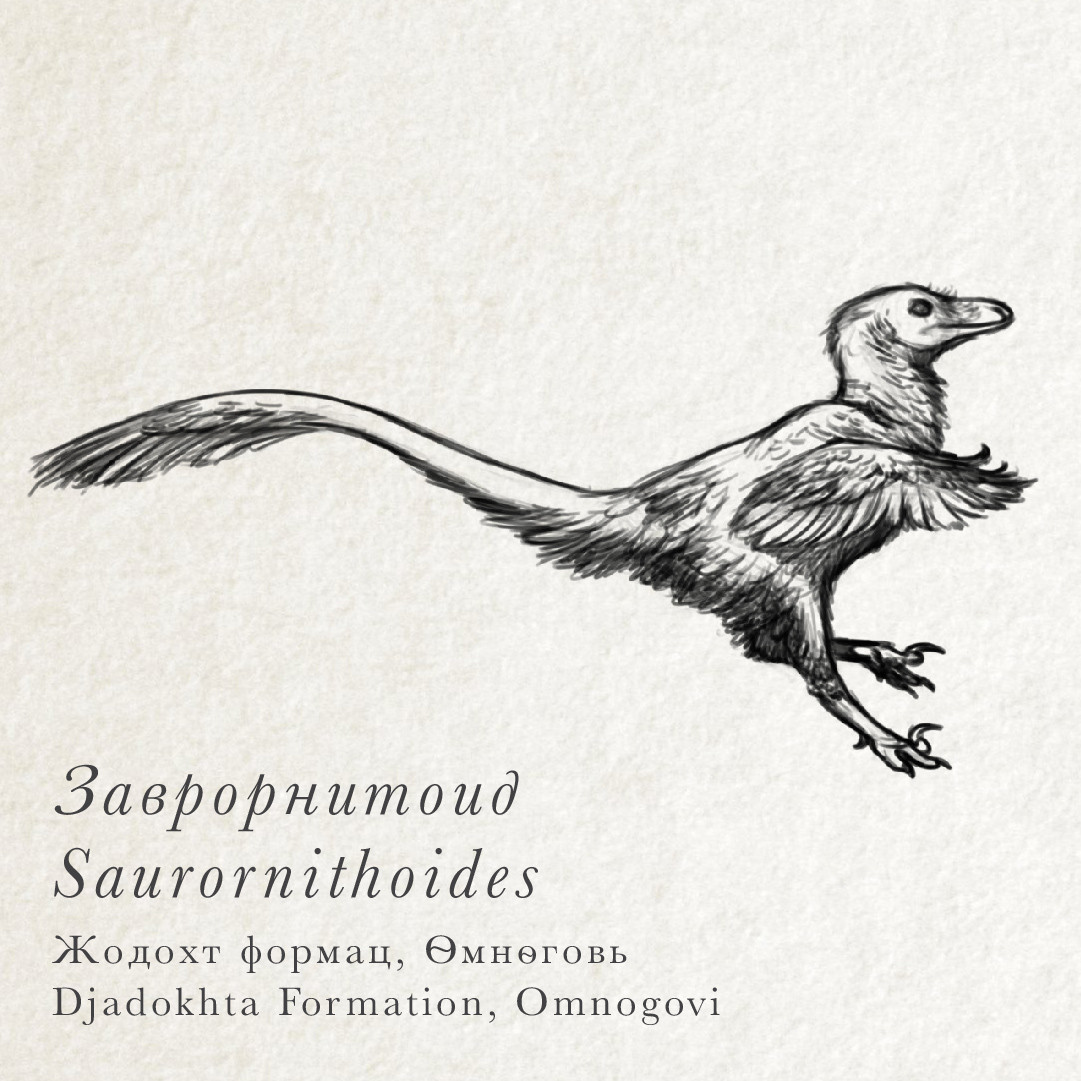
Saurornithoides was one of the first dinosaurs discovered and named from Mongolia. Its long, sharply clawed arms were covered in feathers. It had sharp serrated teeth and a big toe claw that resembled a crescent shaped knife. This animal was quick, agile, and hunted small prey.
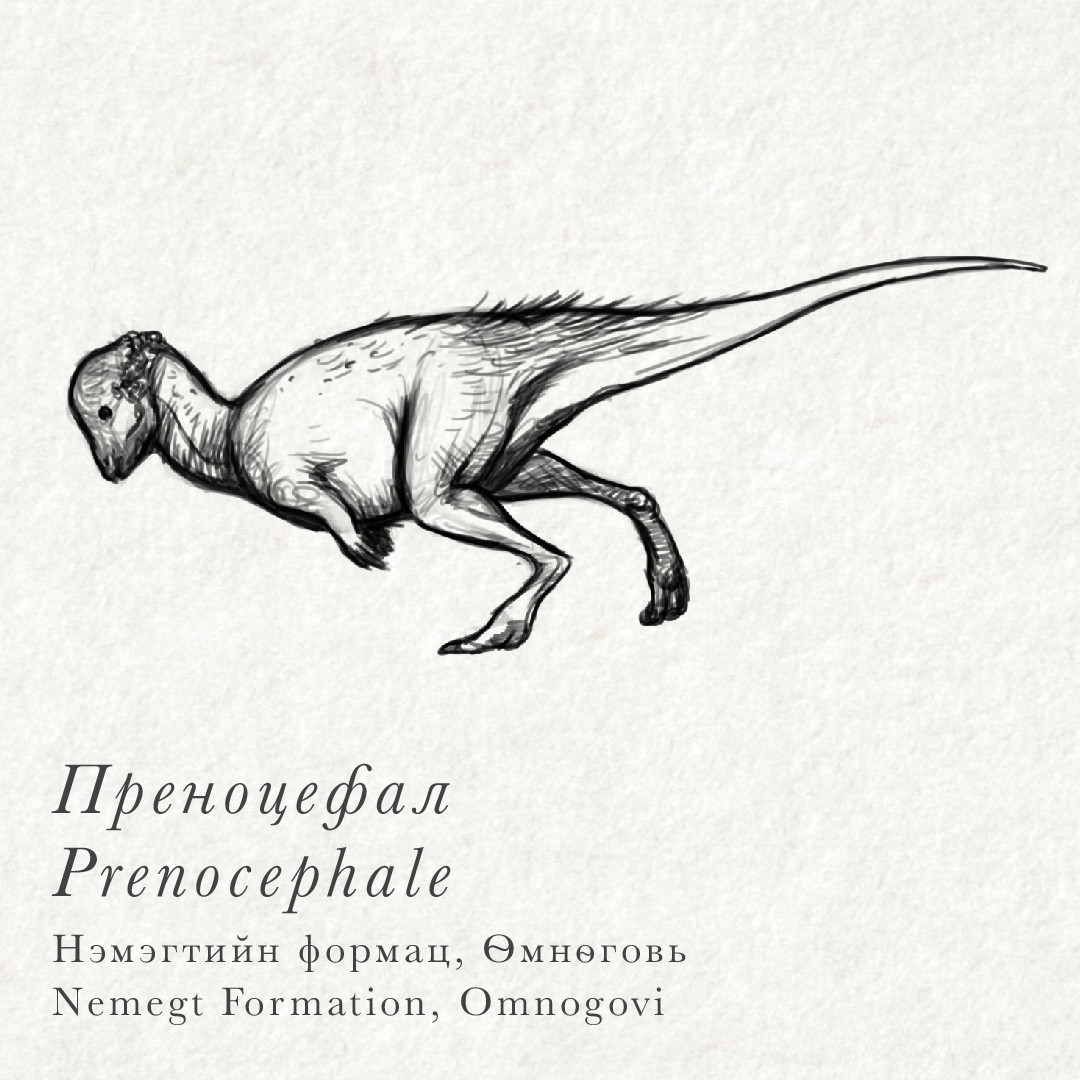
Prenocephale was a plant eater that walked on two legs with a very thick skull that was likely used to attract mates. Some scientists have suggested these animals engaged in combat like yaks, in which males push their heads against one another. Others have suggested these animals knocked their heads together like mountain goats.
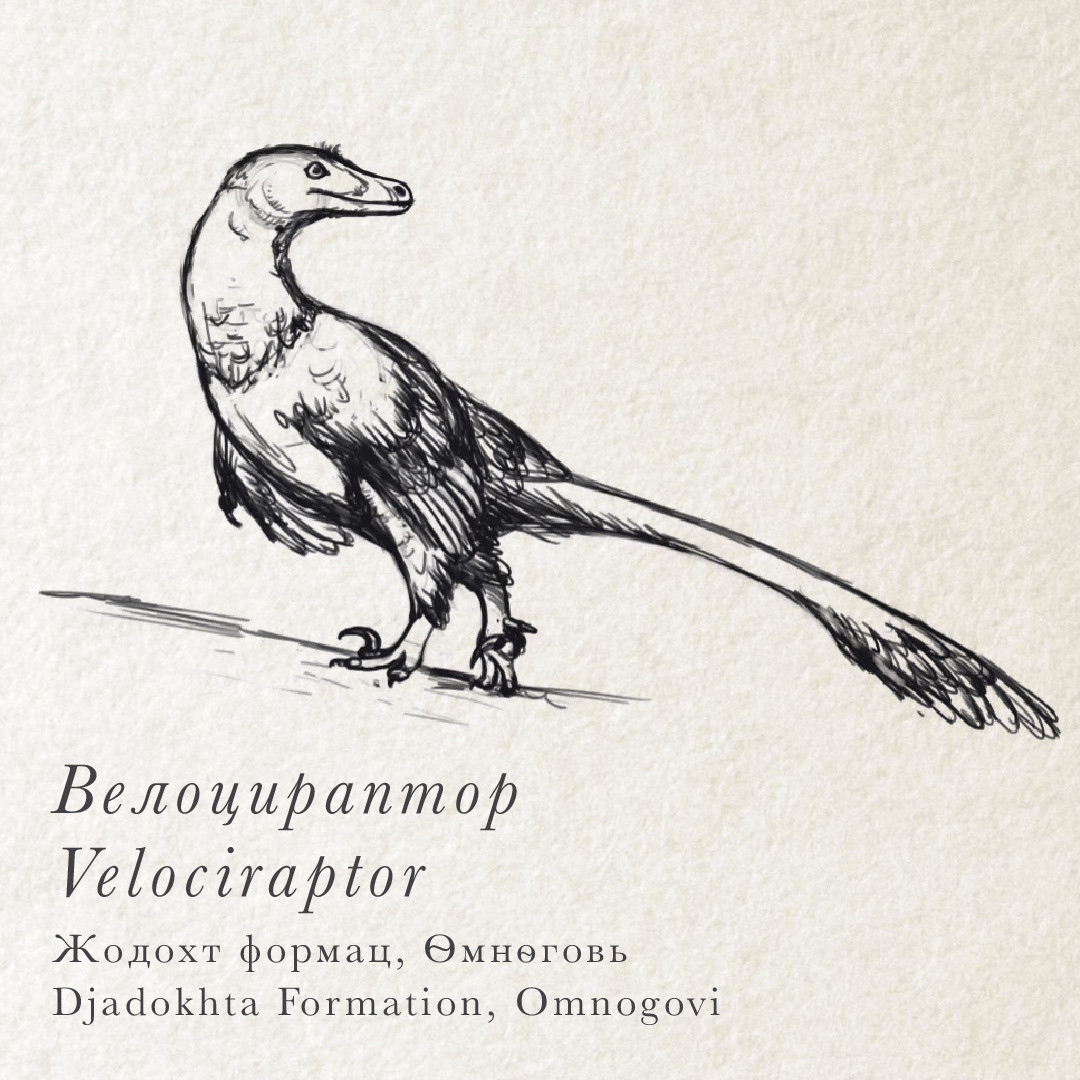
Velociraptor, the sharp-clawed predator who starred in the Jurassic Park films, was first discovered at the Flaming Cliffs in the Mongolian Gobi Desert. Scientists now know that it was feathered, and they believe it hunted Protoceratops–not people. It was two meters from head to tail and stood roughly knee high to an adult human.

Weighing two tons and covered with spiky armor, Pinacosaurus was a formidable herbivore. The first one known to modern science was found at Mongolia’s Flaming Cliffs in 1923. This dinosaur may have used its bony tail club as a defensive weapon against predators.
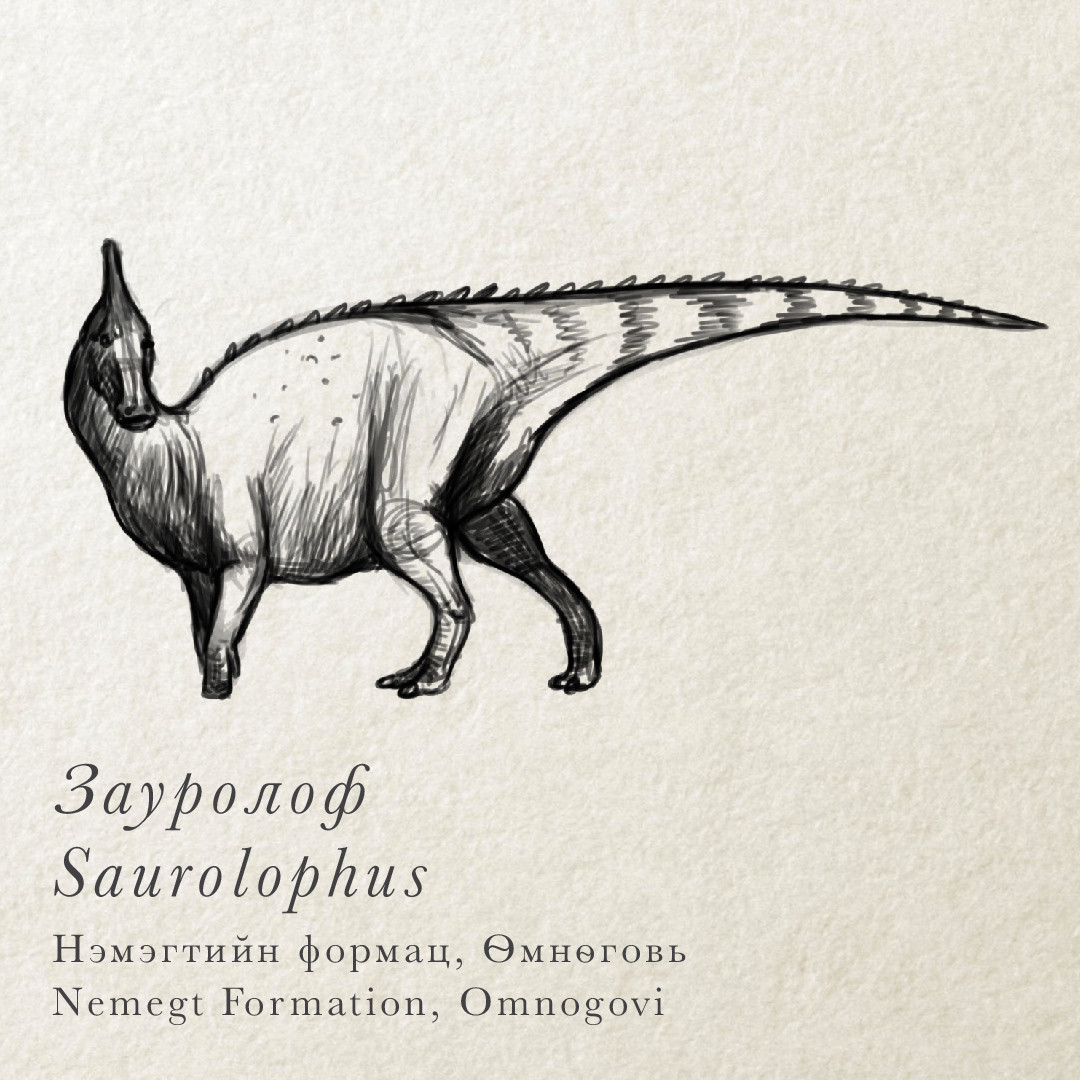
Saurolophus was a large herbivorous dinosaur with a single horn sticking out of the back of its head. This dinosaur was first discovered in North America, and has more recently been found in Mongolia. Its existence on both continents supports the idea that North America and Asia were connected by a land bridge 70 million years ago. There is some debate whether this animal preferred to walk on two legs or four legs.
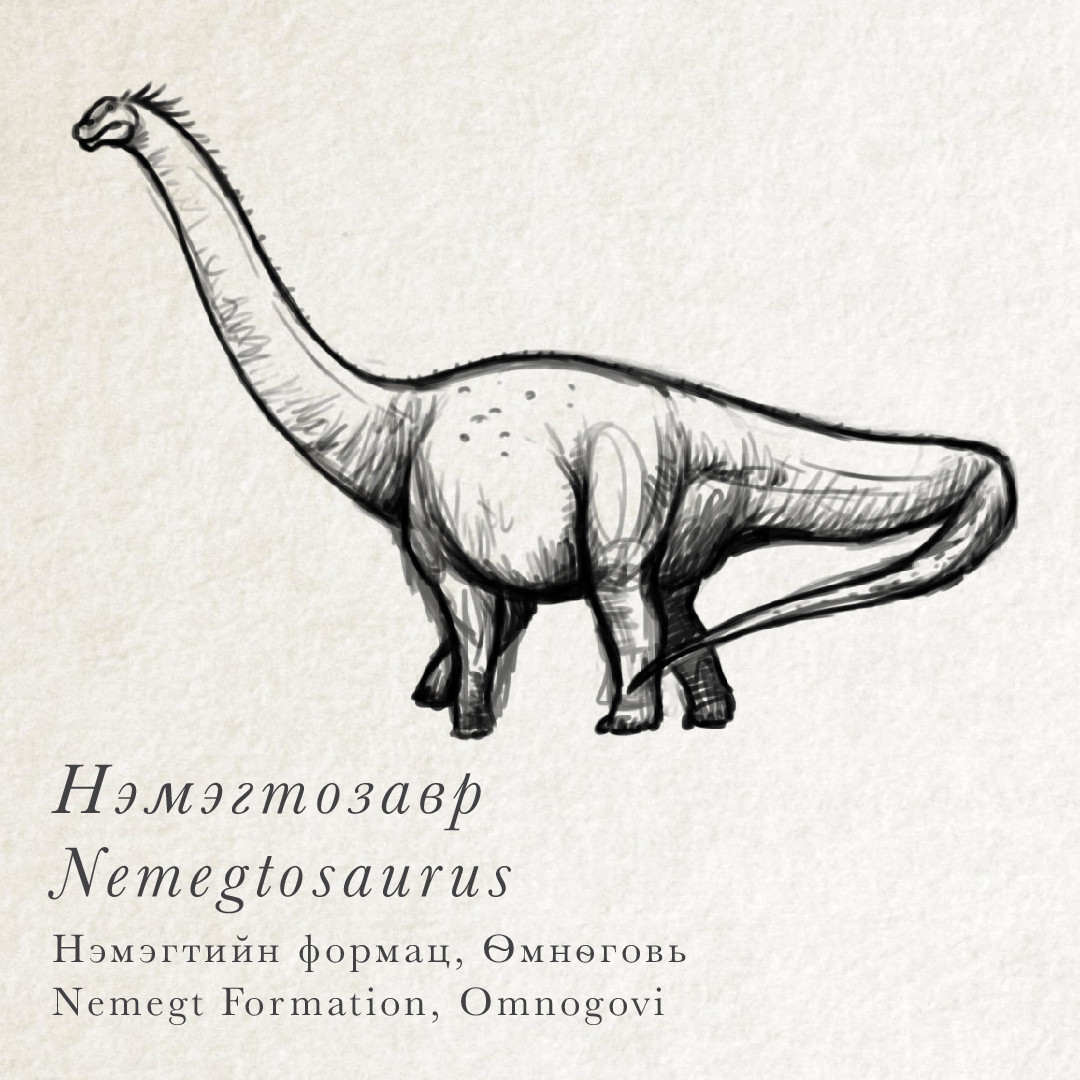
Known from only a skull, Nemegtosaurus is related to some of the largest dinosaurs that ever existed. Bones of gigantic dinosaurs, called titanosaurs, were often left in the desert on expeditions to Mongolia because of the difficulty of excavating and moving them. Scientists are now getting a better look at what this giant herbivore may have looked like.
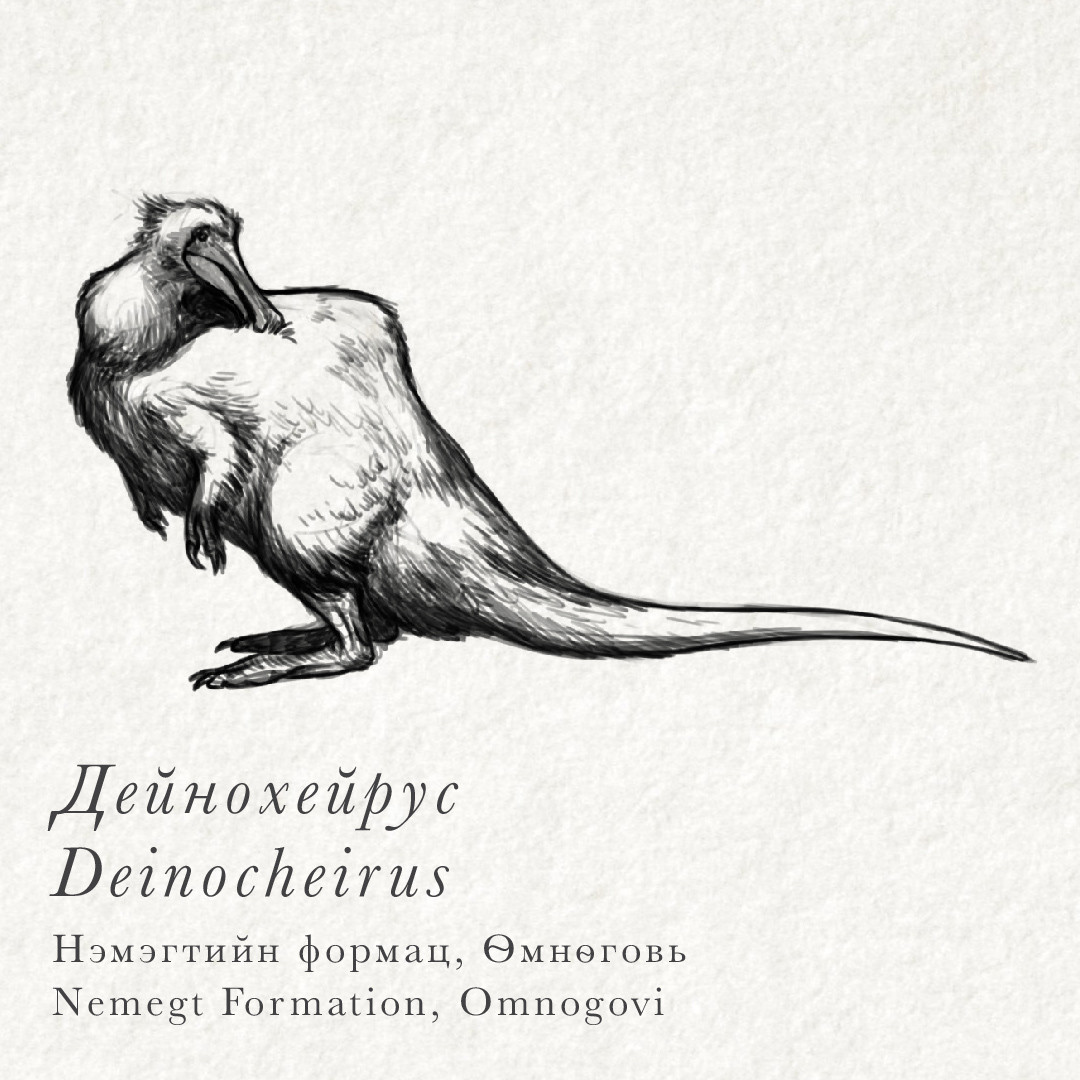
Deinocheirus was 15 meters from head to tail. It had two huge grasping arms and it waded through wetlands in Mongolia around 70 million years ago. For 45 years this species was only known by a pair of arms but recent fossil discoveries include much more of its skeleton. It had a pelican-like skull with thin, straw-like teeth. The remains of this animal were found with fish bones, possibly suggesting that this dinosaur ate fish. However, the shape of its teeth indicates it was likely a plant eater.
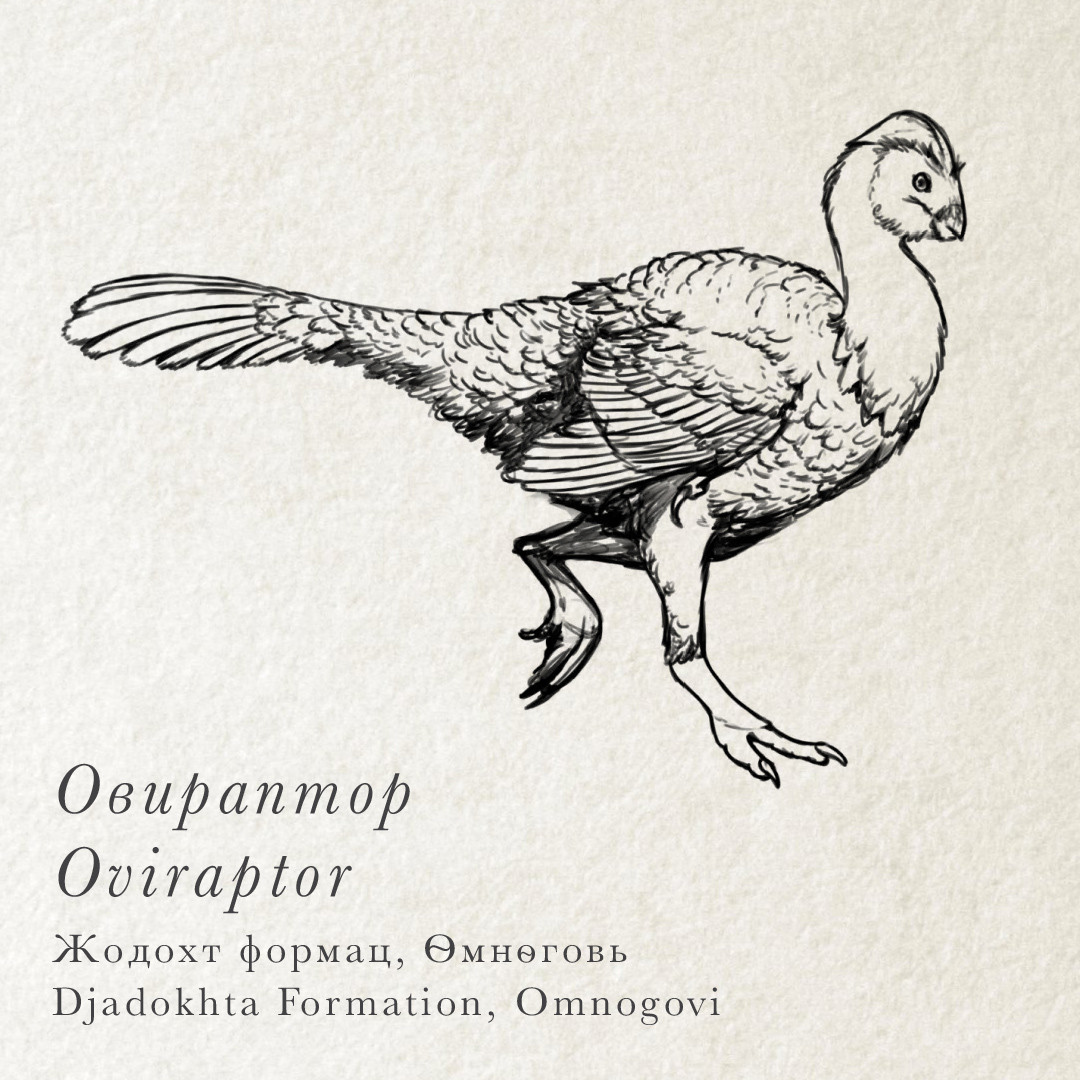
Oviraptor’s name means “egg stealer” because the first one ever found–at Mongolia’s Flaming Cliffs–was fossilized with a nest of eggs. We now know that the eggs were actually its own, and it was just being a good parent. Oviraptors came to the area to build their nests and hatch their young.
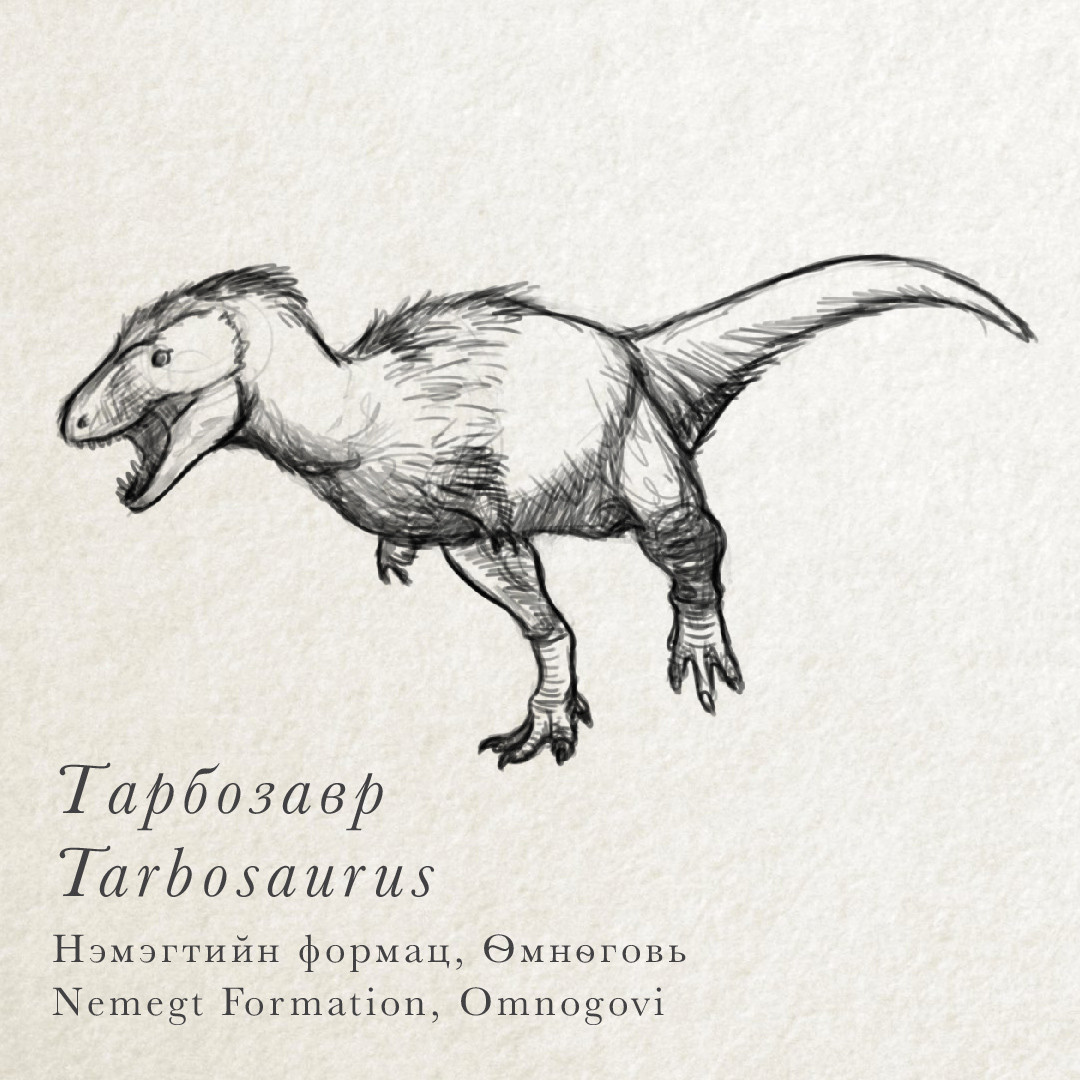
Tarbosaurus was a meat-eating dinosaur that ate other dinosaurs. Although it probably killed its prey, some scientists think that Tarbosaurus scavenged on dead dinosaurs instead. It could take large bites of muscles and bones with its long, knife-like teeth but its small arms were probably not useful for hunting. Tarbosaurus is a close relative of the most famous dinosaur from North America, Tyrannosaurus rex. Tarbosaurus has a narrower snout and eyes that are positioned more to the sides of its head.
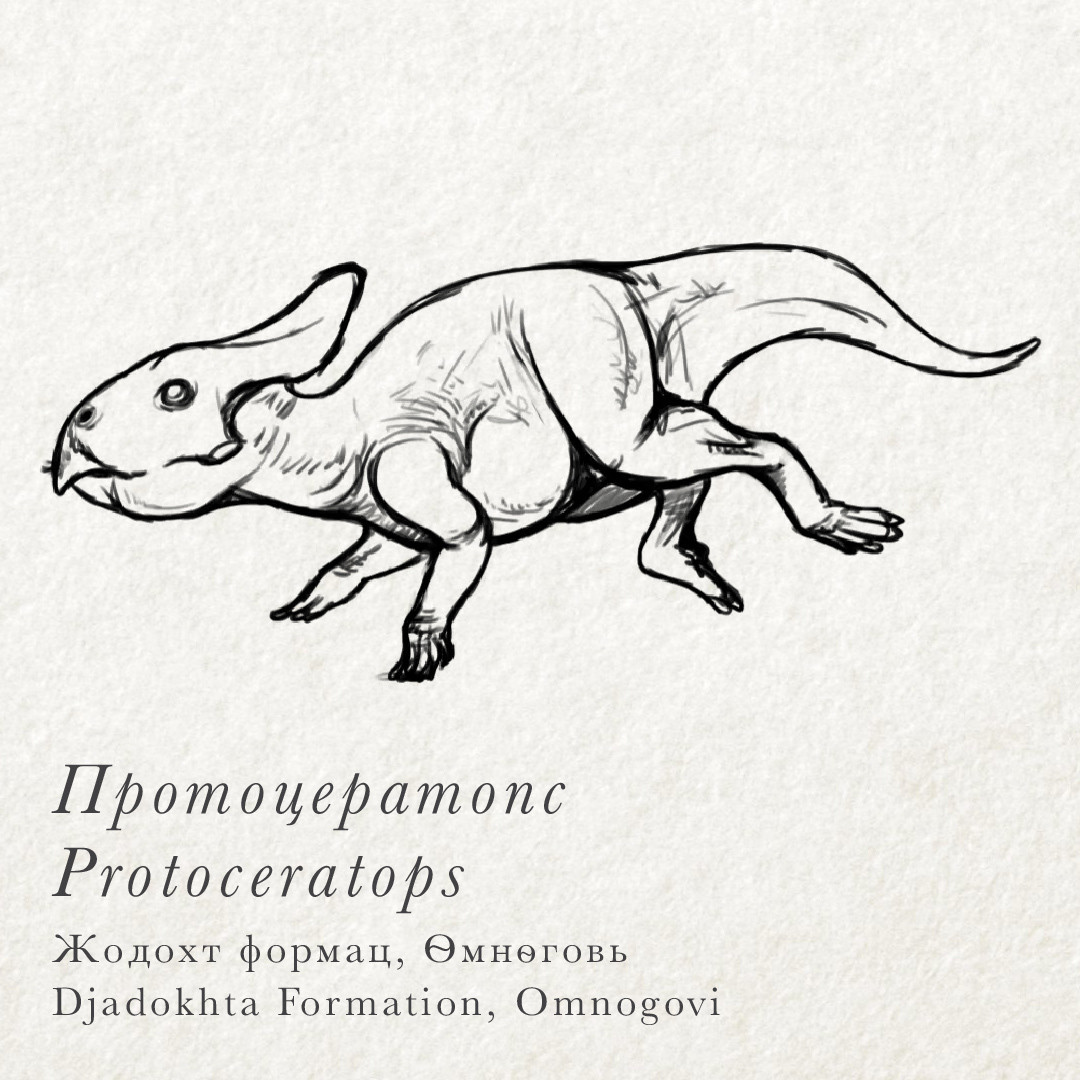
Protoceratops was the first dinosaur discovered by western scientists Mongolia, at the Flaming Cliffs in 1922. With a beak like a bird but a body with four legs, it may have been found by ancient travellers and interpreted as the legendary griffin. Although its beak may look sharp like an eagle’s, it ate plants and was closer in size to a sheep than a lion.
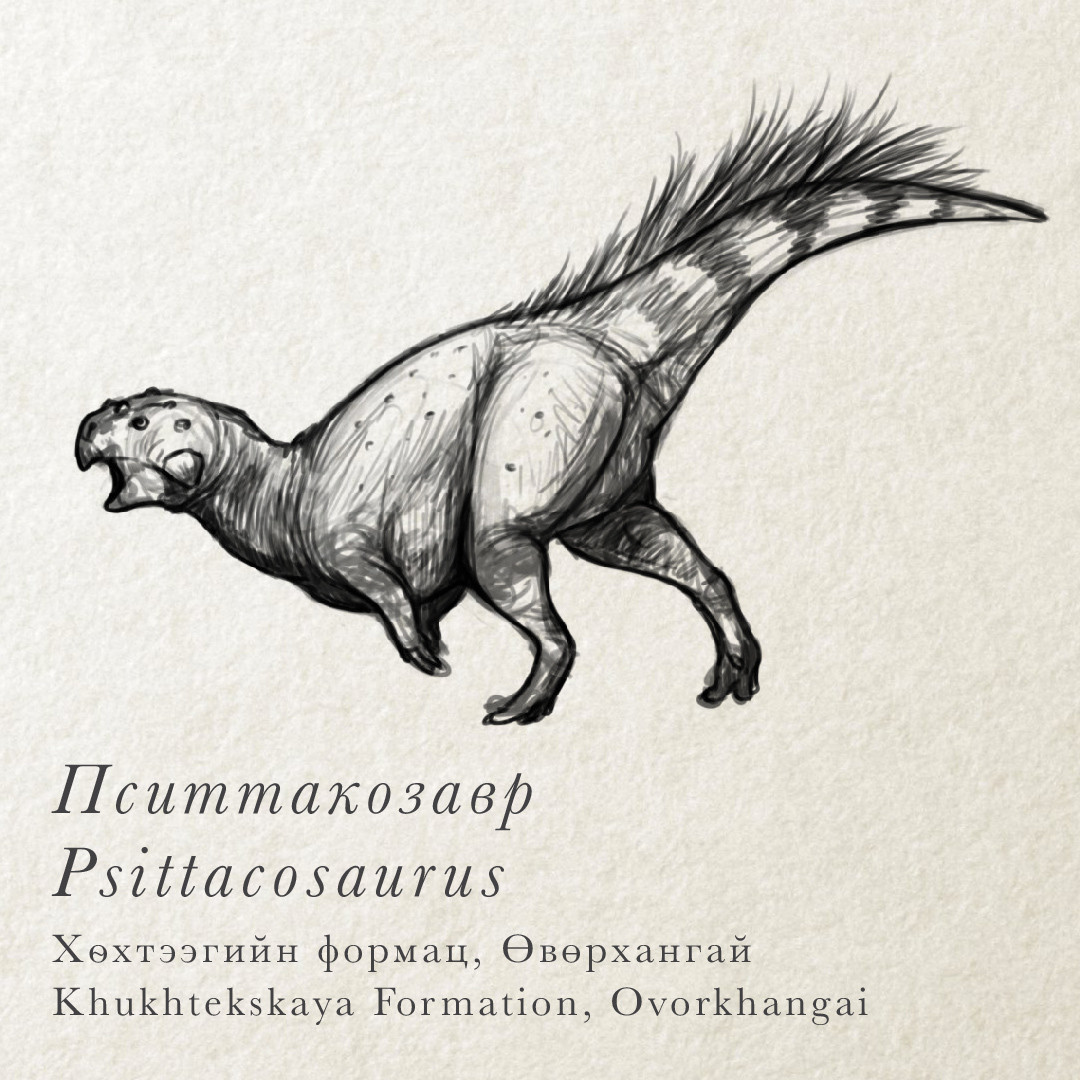
Psittacosaurus was a small herbivore with a stout beak that somewhat resembled those of birds. This dinosaur lived around 125 million years ago and was quite common based on the many complete skeletons that have been found. There is a scientific debate whether this animal preferred to walk on two legs or four legs.
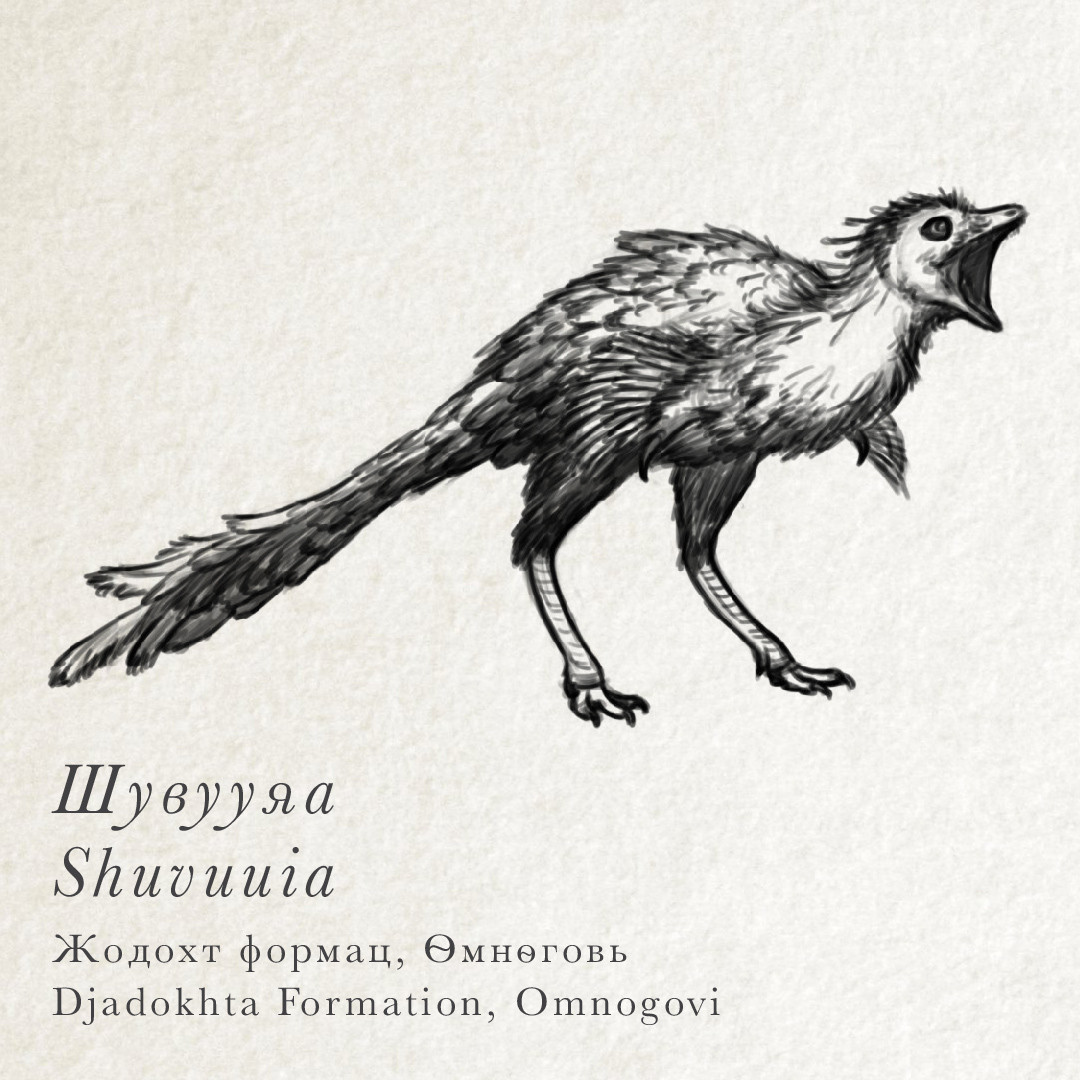
Shuvuuia was a very small dinosaur that looked much like a modern bird. It was about the size of a rooster and had a single claw on each arm.
Source: mongoliandinosaurs.org
Hundreds, perhaps thousands, of different dinosaur species may have lived in Mongolia throughout the Mesozoic, a time period that began 248 million years ago and ended 65 million years ago in a mass extinction that wiped out all dinosaurs except birds.
Here is a small selection of the many dinosaurs that have been discovered by paleontologists in Mongolia. Thanks to Emily Willoughby for the dinosaur artwork and our hardworking volunteers for the research, writing, translation and design. If you would like to help us create more of these and expand them into full pages, please donate.

A relative of Tarbosaurus, Alioramus was smaller and had a longer skull. Although there is some controversy about whether Tarbosaurus hunted live prey, there is more certainty that Alioramus was a hunter instead of a scavenger. It lived in the Bayankhongor area between 66 and 72 million years ago.

Saurornithoides was one of the first dinosaurs discovered and named from Mongolia. Its long, sharply clawed arms were covered in feathers. It had sharp serrated teeth and a big toe claw that resembled a crescent shaped knife. This animal was quick, agile, and hunted small prey.

Prenocephale was a plant eater that walked on two legs with a very thick skull that was likely used to attract mates. Some scientists have suggested these animals engaged in combat like yaks, in which males push their heads against one another. Others have suggested these animals knocked their heads together like mountain goats.

Velociraptor, the sharp-clawed predator who starred in the Jurassic Park films, was first discovered at the Flaming Cliffs in the Mongolian Gobi Desert. Scientists now know that it was feathered, and they believe it hunted Protoceratops–not people. It was two meters from head to tail and stood roughly knee high to an adult human.

Weighing two tons and covered with spiky armor, Pinacosaurus was a formidable herbivore. The first one known to modern science was found at Mongolia’s Flaming Cliffs in 1923. This dinosaur may have used its bony tail club as a defensive weapon against predators.

Saurolophus was a large herbivorous dinosaur with a single horn sticking out of the back of its head. This dinosaur was first discovered in North America, and has more recently been found in Mongolia. Its existence on both continents supports the idea that North America and Asia were connected by a land bridge 70 million years ago. There is some debate whether this animal preferred to walk on two legs or four legs.

Known from only a skull, Nemegtosaurus is related to some of the largest dinosaurs that ever existed. Bones of gigantic dinosaurs, called titanosaurs, were often left in the desert on expeditions to Mongolia because of the difficulty of excavating and moving them. Scientists are now getting a better look at what this giant herbivore may have looked like.

Deinocheirus was 15 meters from head to tail. It had two huge grasping arms and it waded through wetlands in Mongolia around 70 million years ago. For 45 years this species was only known by a pair of arms but recent fossil discoveries include much more of its skeleton. It had a pelican-like skull with thin, straw-like teeth. The remains of this animal were found with fish bones, possibly suggesting that this dinosaur ate fish. However, the shape of its teeth indicates it was likely a plant eater.

Oviraptor’s name means “egg stealer” because the first one ever found–at Mongolia’s Flaming Cliffs–was fossilized with a nest of eggs. We now know that the eggs were actually its own, and it was just being a good parent. Oviraptors came to the area to build their nests and hatch their young.

Tarbosaurus was a meat-eating dinosaur that ate other dinosaurs. Although it probably killed its prey, some scientists think that Tarbosaurus scavenged on dead dinosaurs instead. It could take large bites of muscles and bones with its long, knife-like teeth but its small arms were probably not useful for hunting. Tarbosaurus is a close relative of the most famous dinosaur from North America, Tyrannosaurus rex. Tarbosaurus has a narrower snout and eyes that are positioned more to the sides of its head.

Protoceratops was the first dinosaur discovered by western scientists Mongolia, at the Flaming Cliffs in 1922. With a beak like a bird but a body with four legs, it may have been found by ancient travellers and interpreted as the legendary griffin. Although its beak may look sharp like an eagle’s, it ate plants and was closer in size to a sheep than a lion.

Psittacosaurus was a small herbivore with a stout beak that somewhat resembled those of birds. This dinosaur lived around 125 million years ago and was quite common based on the many complete skeletons that have been found. There is a scientific debate whether this animal preferred to walk on two legs or four legs.

Shuvuuia was a very small dinosaur that looked much like a modern bird. It was about the size of a rooster and had a single claw on each arm.
Source: mongoliandinosaurs.org

